Many visitors to London like to see the city from on high and several attractions give them the opportunity to do so. The London Eye and the viewing platform at The Shard are two of the capital’s most popular attractions, while One New Change and the Sky Garden attract people who do not wish to pay an entrance fee or wait in line to look at London from high up. Other towers, such as Arcelor Mittal Orbit in the Olympic Park and The Monument to the Great Fire, may not attract so many visitors but are important parts of London’s skyline.
1. London Eye
Address: The London Eye, Riverside Building, County Hall, Westminster Bridge Road, London SE1 7PB | Website
At 443 feet (135 metres) high, the London Eye is Britain’s tallest observation wheel. With three million riders a year, it is also the most popular paid-for tourist attraction in the United Kingdom. Designed by husband and wife team Julia Barfield and David Marks, the London Eye was opened at the end of 1999 by the then Prime Minister Tony Blair but did not start operating until March 2000 due to structural problems. There are thirty-two capsules on the Eye (one for each borough in Greater London), and each has room for up to twenty-five people.
Situated on the south bank of the River Thames near to Waterloo station, the London Eye was originally considered a temporary structure but was given a five-year lease by the local Lambeth Council, who agreed to make it a permanent feature of London’s skyline in 2008.
A circuit on the London Eye takes thirty minutes, but you can avoid the queues by booking a fast-track ticket or even by reserving a private pod, although this is obviously more expensive. The London Eye is particularly busy on Valentine’s Day as a site for marriage proposals.
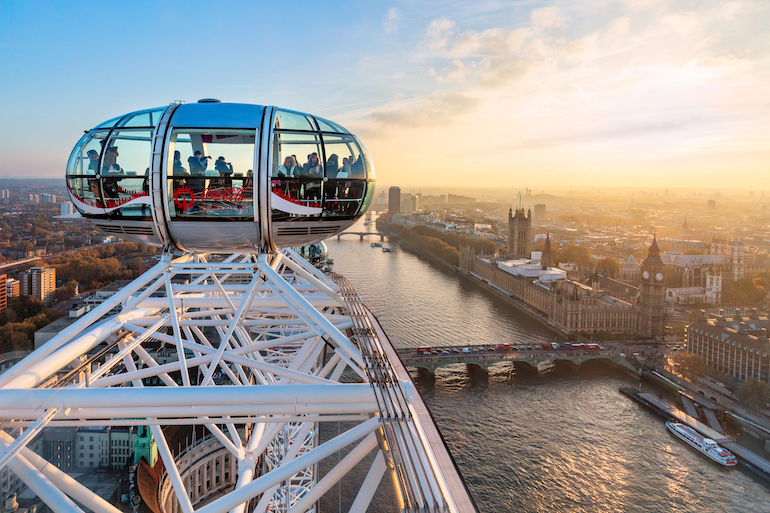 London Eye. Photo Credit: © visitlondon.com/Jon Reid.
London Eye. Photo Credit: © visitlondon.com/Jon Reid.
2. The Shard
Address: The Shard, 31 St Thomas St, London SE1 9QU | Website
The London Eye is not the highest point from which to take in amazing views of the city. Another option is the viewing platform on the Shard, Renzo Piano’s skyscraper near London Bridge just downriver from London Eye.
Unlike some buildings, the Shard embraced its nickname, which it uses for publicity purposes. Its ninety-five floors contain offices used by thirty-two different companies, ten luxury apartments, three restaurants, and a hotel. The building, which was opened in 2013, stands at just over a thousand feet (300 metres) high and costs nearly half a billion pounds to build.
The Viewing Platform of the Shard attracts over two million visitors a year. They ascend on a high-speed elevator which takes them to the sixty-eighth floor in one minute. The visit is not time-limited, and a popular bar and restaurant are situated on the viewing platform.
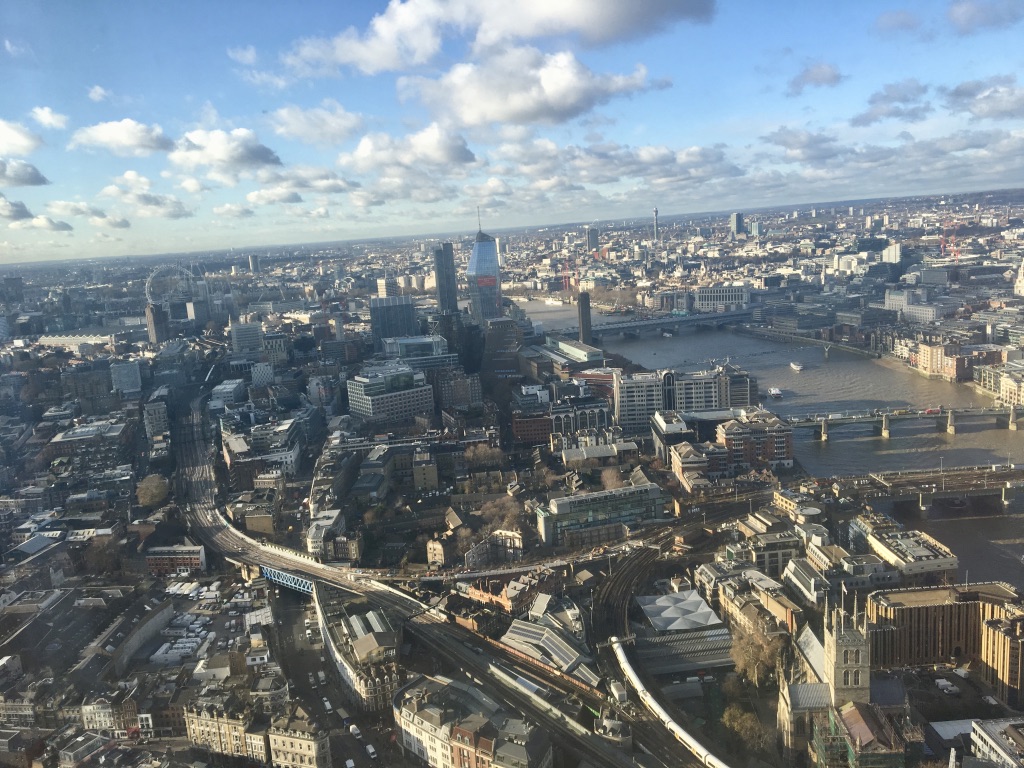 View across London from one of the rooms at Shangri-La Hotel on the 45th floor At The Shard. Photo Credit: © Ursula Petula Barzey.
View across London from one of the rooms at Shangri-La Hotel on the 45th floor At The Shard. Photo Credit: © Ursula Petula Barzey.
3. Arcelor Mittal Orbit
Address: Arcelor Mittal Orbit, Queen Elizabeth Olympic Park, 5 Thornton St, London E20 2AD | Website
London is the only city on the planet to have held the Olympics three times – in 1908, 1948, and 2012. An Olympic Park was constructed in Stratford, East London to host most of the events at the 2012 games. The 376 feet (115 metre) Arcelor Mittal Tower, designed by the sculptor Anish Kapoor was opened there in 2014 after being built at a cost of £22.5 million.
Kapoor’s design was selected from fifty submissions after the former mayor of Greater London (later British Prime Minister) Boris Johnson said that a tower was needed to attract visitors and act as a focal point for the park. Much of the funding and all of the steel used in the tower was provided by Lakshmi Mittal, and the tower is named after his company.
Situated well out of the centre of London and criticised for its controversial design, which is inspired by the Olympic rings, the tower has struggled to attract visitors to the same extent as the Shard and London Eye and a slide was added in 2016 to boost numbers. Those who want to ride down on the slide on a mat in less than a minute can do so for a small extra fee.
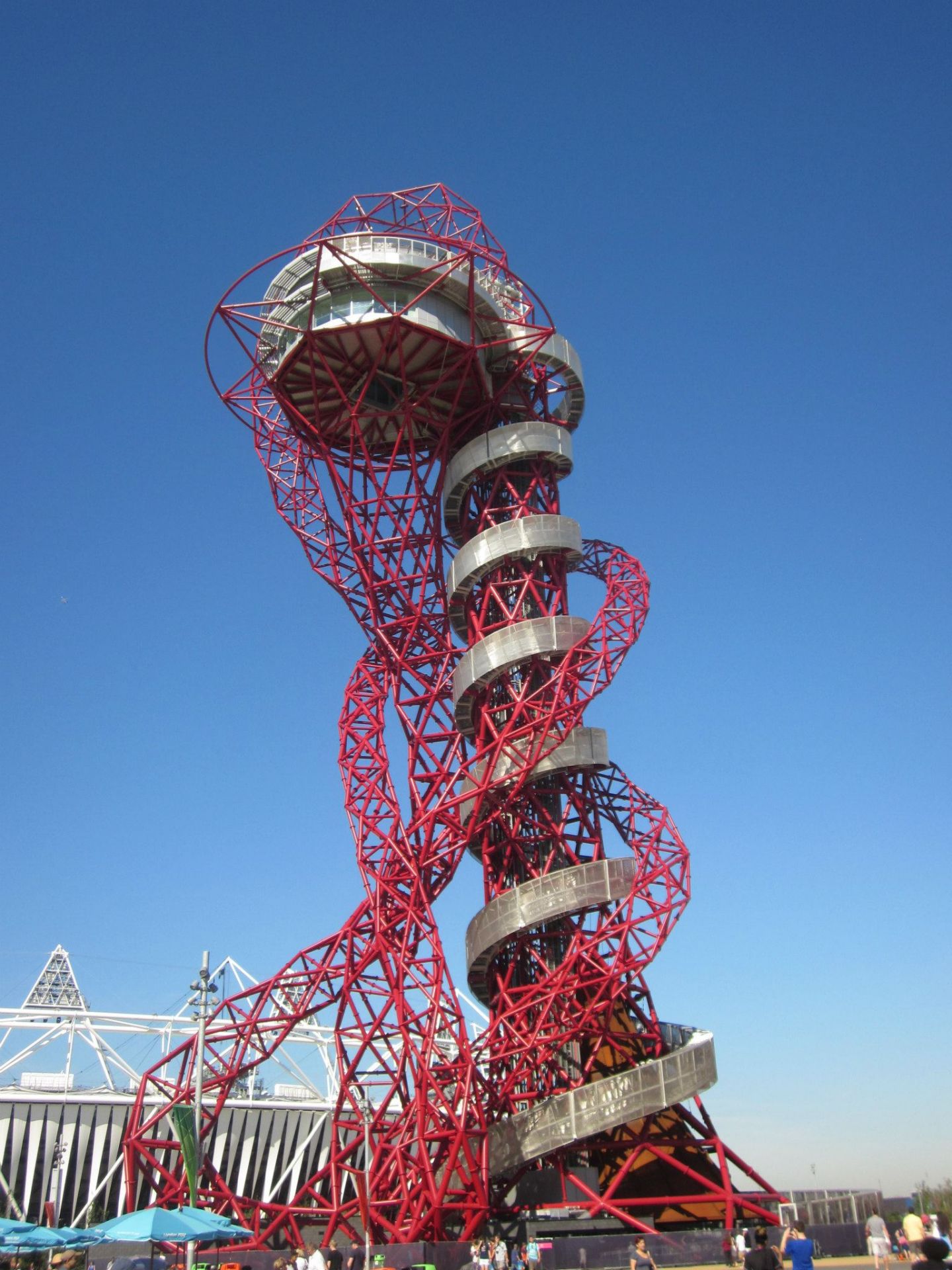 Arcelor Mittal Orbit at the Queen Elizabeth Olympic Park in London. Photo Credit: © Ursula Petula Barzey.
Arcelor Mittal Orbit at the Queen Elizabeth Olympic Park in London. Photo Credit: © Ursula Petula Barzey.
4. The Top of the Dome of Saint Paul’s Cathedral
Address: Saint Paul’s Cathedral, St. Paul’s Churchyard, London EC4M 8AD | Website
Visitors to Sir Christopher Wren’s magnificent cathedral, which was built after the Great Fire of London in 1666 destroyed the old Gothic church, can ascend to the top of the dome to gain some wonderful views of London’s skyline. There is no charge for doing this, although the usual entrance fee to the cathedral has to be paid to access the tower. Those who ascend it will not usually be allowed to use the elevator, which is reserved for staff and wheelchair users, and they will have to climb up 528 steps to reach the top and enjoy the view.
Saint Paul’s Cathedral is built on the top of Ludgate Hill, the highest point in the old City of London, and the top of the dome was once London’s highest point. However, the high cost of land in the City and the concentration of financial businesses in the area mean that it has long since been outstripped by buildings which, like the Shard, can now rise to a thousand feet high.
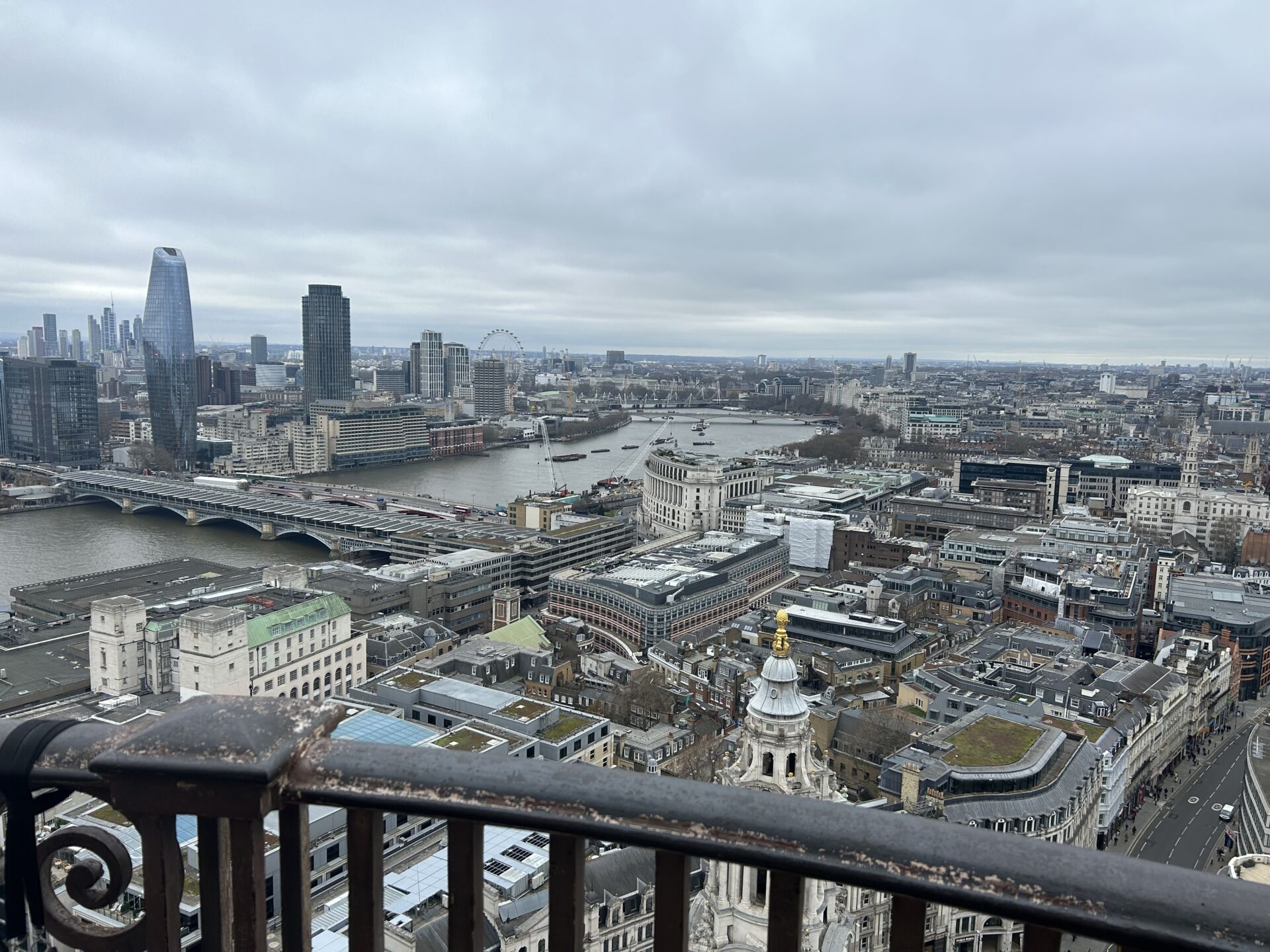 View from the roof at St Paul’s Cathedral. Photo Credit: © Edwin Lerner.
View from the roof at St Paul’s Cathedral. Photo Credit: © Edwin Lerner.
5. One New Change
Address: One New Change, London EC4M 9AF | Website
A useful stop for many groups and individuals near to Saint Paul’s Cathedral can be found on the roof terrace of One New Change, EC4 9AF. It is a shopping and restaurant complex with convenient toilets and a lift to the platform, which affords good views of this part of the City.
There is no charge for entry or toilets. It is open daily and a good stop for those on a budget.
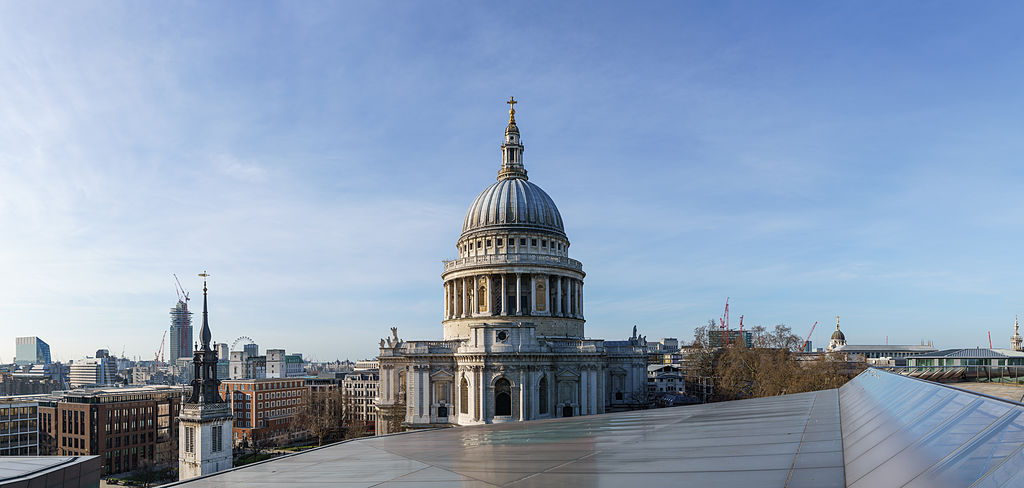 View from St Paul’s Cathedral Dome from One New Change. Photo Credit: © Colin via Wikimedia Commons.
View from St Paul’s Cathedral Dome from One New Change. Photo Credit: © Colin via Wikimedia Commons.
6. The Monument to the Great Fire
Address: The Monument to the Great Fire, Fish St Hill, London, EC3R 8AH | Website
Another construction by Sir Christopher Wren, specifically built to commemorate the Great Fire, is simply called the Monument. It is located to the north of London Bridge and stands 202 feet (62 metres) high. A mural at the base of the tower depicts the burning of London, which was vividly described by the diarist Samuel Pepys, and its rebuilding under Charles the Second. Again, visitors have to ascend the steps (311 of them) to gain access to enjoy the view from the top of the Monument. The cost is fairly low, and the Monument is open every day.
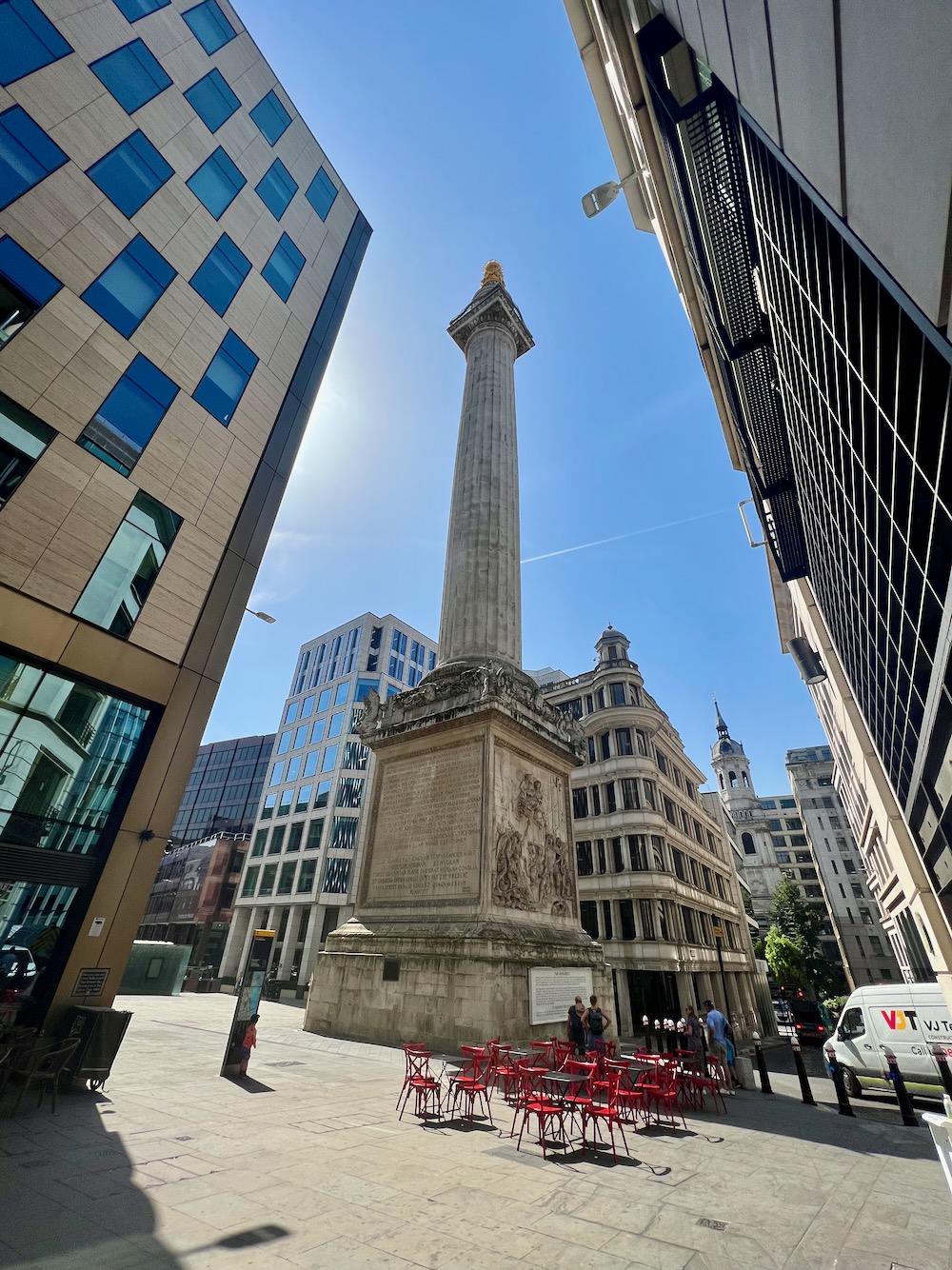 Monument to the Great Fire of London. Photo Credit: © Ursula Petula Barzey.
Monument to the Great Fire of London. Photo Credit: © Ursula Petula Barzey.
7. The Sky Garden at the Walkie-Talkie Building
Address: Sky Garden, 1 Sky Garden Walk, London, EC3M 8AF | Website
Sitting on top of the building popularly called the Walkie-Talkie because of its resemblance to a two-way radio set, London’s Sky Garden has proved a popular attraction that affords fine views out to the surrounding area from a location in the heart of the City of London.
Planning permission for the Walkie-Talkie building was dependent on the provision of an open access area, and the Sky Garden has proved very popular with visitors. It is free to enter, but tickets should be booked in advance as numbers are limited, and it is often sold out. An access ticket is not needed for those making a reservation at the restaurant.
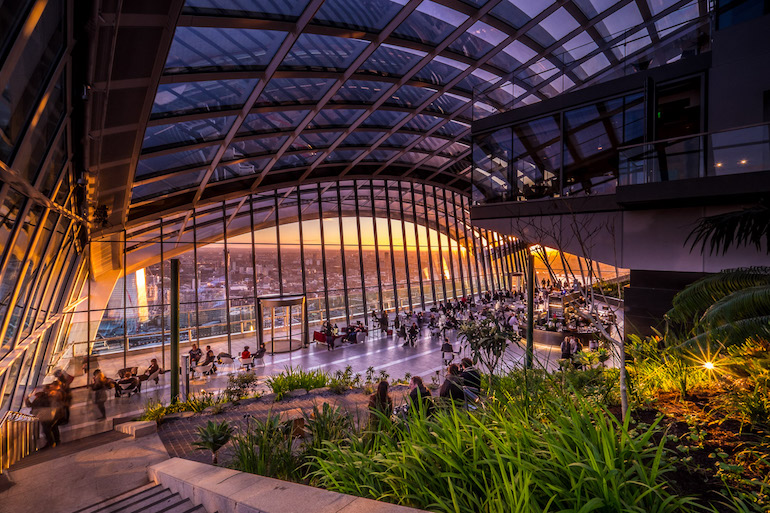 Sky Garden Restaurant in London. Photo Credit: © rhubarb, Sky Garden.
Sky Garden Restaurant in London. Photo Credit: © rhubarb, Sky Garden.
8. Tower Bridge Crosswalk
Address: Tower Bridge, Tower Bridge Road, London SE1 2UP | Website
Tower Bridge was built in the late nineteenth century and stands just to the east of the Tower of London, which inspired the design of the bridge by the architect Horace Jones. It is still the only bridge in London that opens up to allow ships to pass under its bascules. These are raised approximately 800 times a year, or around twice a day. There is no charge levied on the owners of ships or yachts to open the bridge but 24 hours’ notice must be given.
Since 1982 visitors have been able to walk across the passage that connects the two towers, which stand at either end of the bridge about 130 feet (42 metres) above the river beneath. You need to have a good head for heights, as the walkways are transparent. However, they are perfectly safe, and each can hold the weight of four London taxis or six elephants!
The Tower Bridge Crosswalk is open daily.
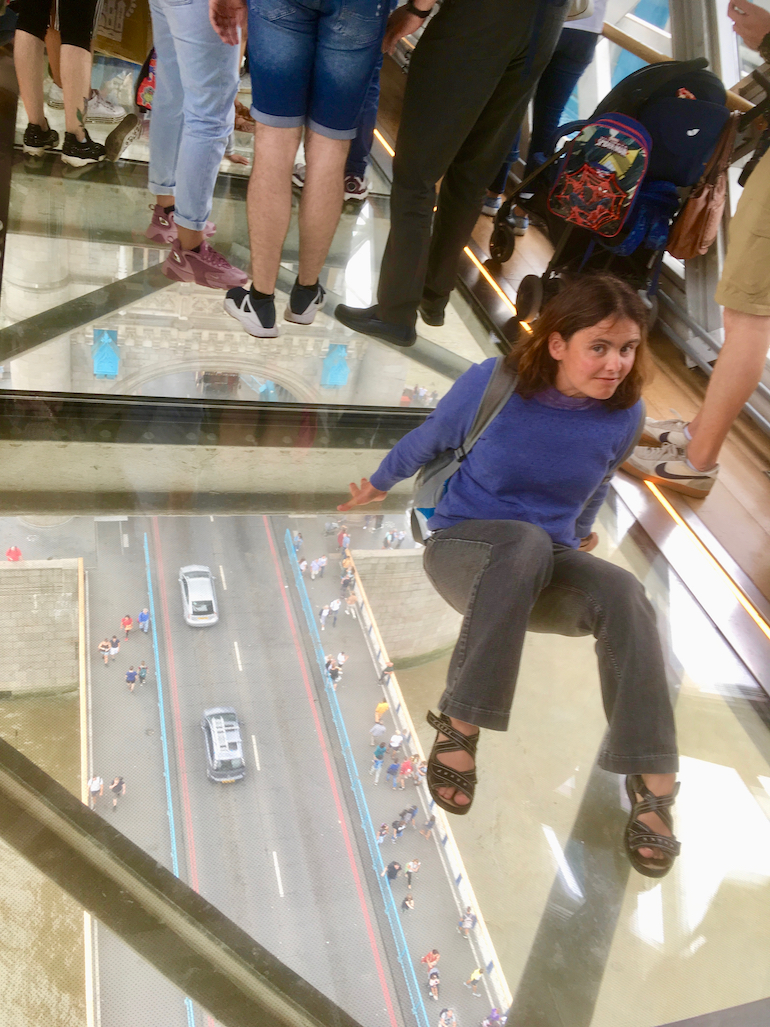 Young lady sitting on glass floor at Tower Bridge in London. Photo Credit: © Edwin Lerner.
Young lady sitting on glass floor at Tower Bridge in London. Photo Credit: © Edwin Lerner.
9. Lift 109, Battersea
Address: Lift 109, Battersea Power Station, Circus Rd W, Nine Elms, London SW8 5BN | Website
Lift 109 is situated at the top of the northwest chimney of Battersea Power Station, which has been converted into a shopping complex after being closed for many years or used as a film set. For a fee, visitors can take a break from their shopping trip to ascend a lift that will take them up to admire a view of London from the western side. Lift 109 is open every day but has proved popular with visitors, and numbers are limited so advance booking is recommended for those who want to ascend the elevator of an old power station chimney.
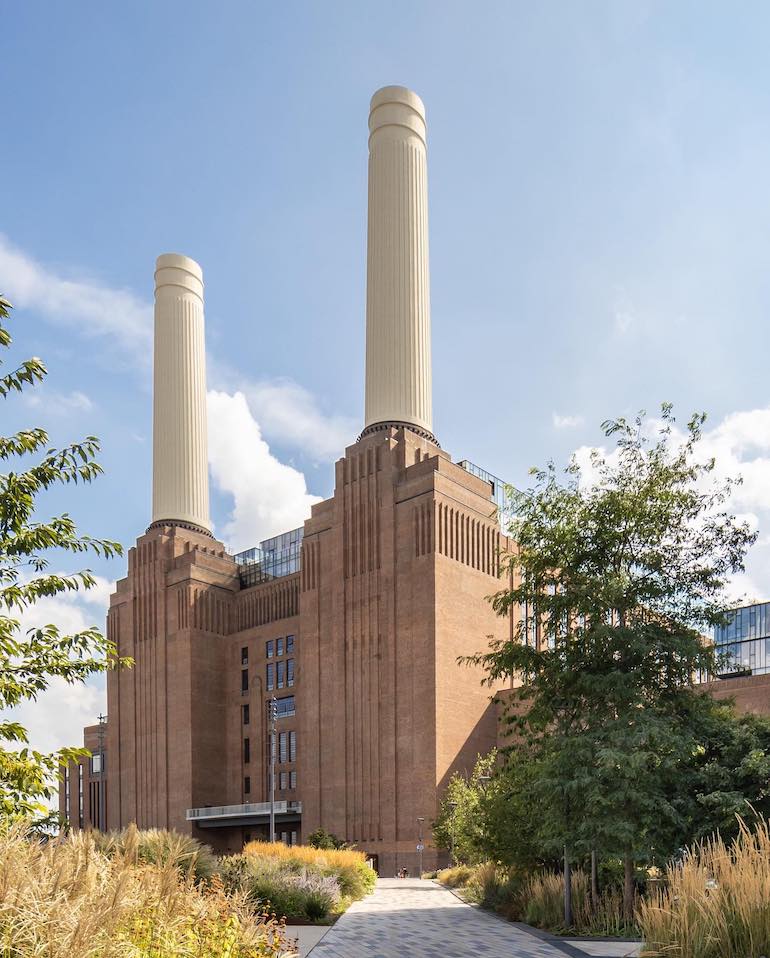 Redeveloped Battersea Power Station. Photo Credit: © Battersea Power Station.
Redeveloped Battersea Power Station. Photo Credit: © Battersea Power Station.
10. Tate Modern’s Viewing Platform
Address: Tate Modern, Blavatnik Building, Bankside, London SE1 9TG | Website
Tate Modern was opened by the late Queen Elizabeth II in 2000. Like all of London’s major public museums, it is free of charge to visitors, and the new Tate has proved to be a huge success, attracting over six million visitors a year. It was expanded in 2016 with an extension that included a viewing platform. Unfortunately, this is not open at the time of writing because residents in nearby flats claimed that their privacy was being undermined by those who could look into their homes from the platform. The case went all the way to the British Supreme Court who found for the flat owners, so the gallery is currently closed.
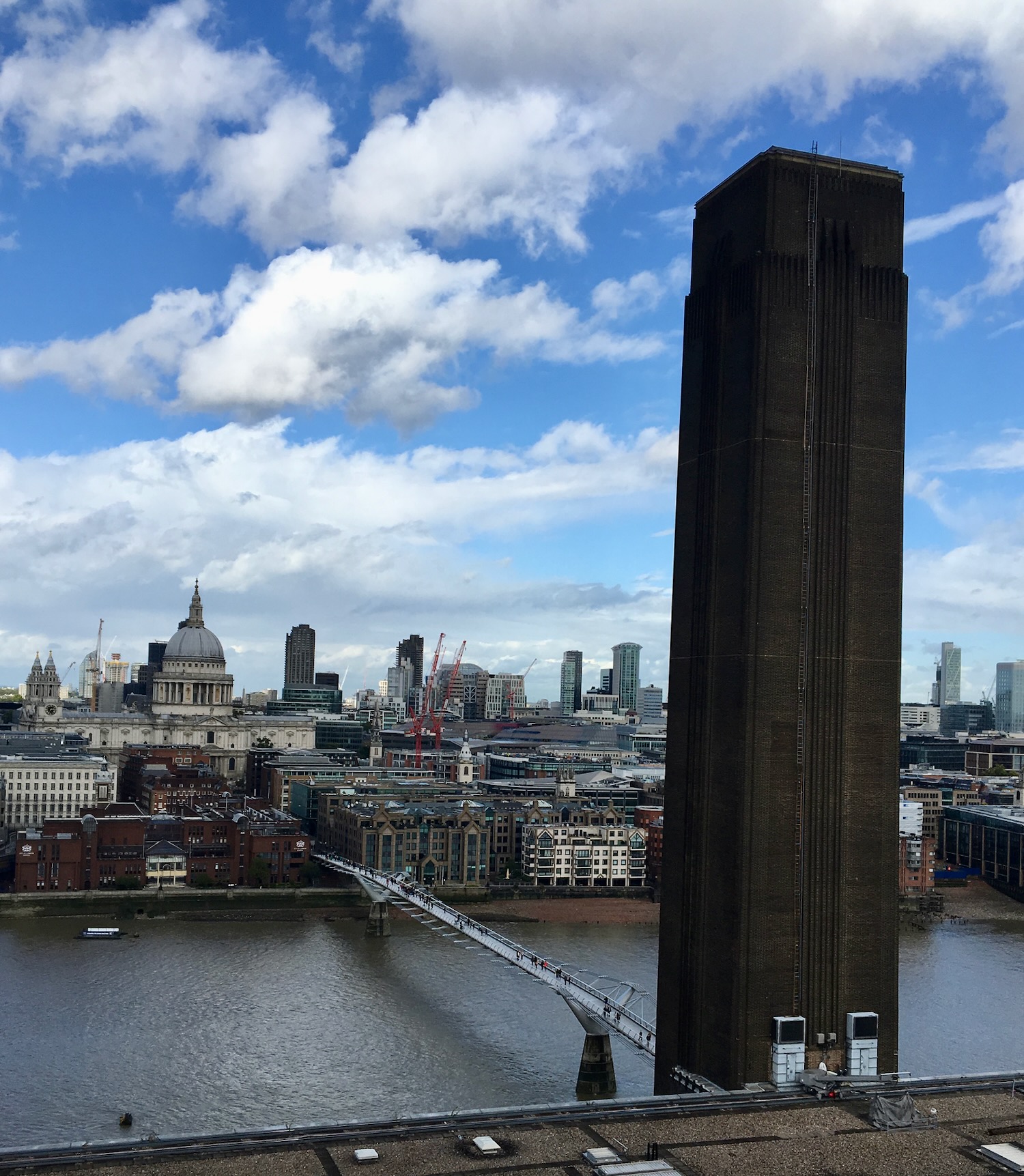 View of St Paul’s Cathedral from the top floor of the Blavatnik Building at Tate Modern. Photo Credit: © Ursula Petula Barzey.
View of St Paul’s Cathedral from the top floor of the Blavatnik Building at Tate Modern. Photo Credit: © Ursula Petula Barzey.







Leave a Reply